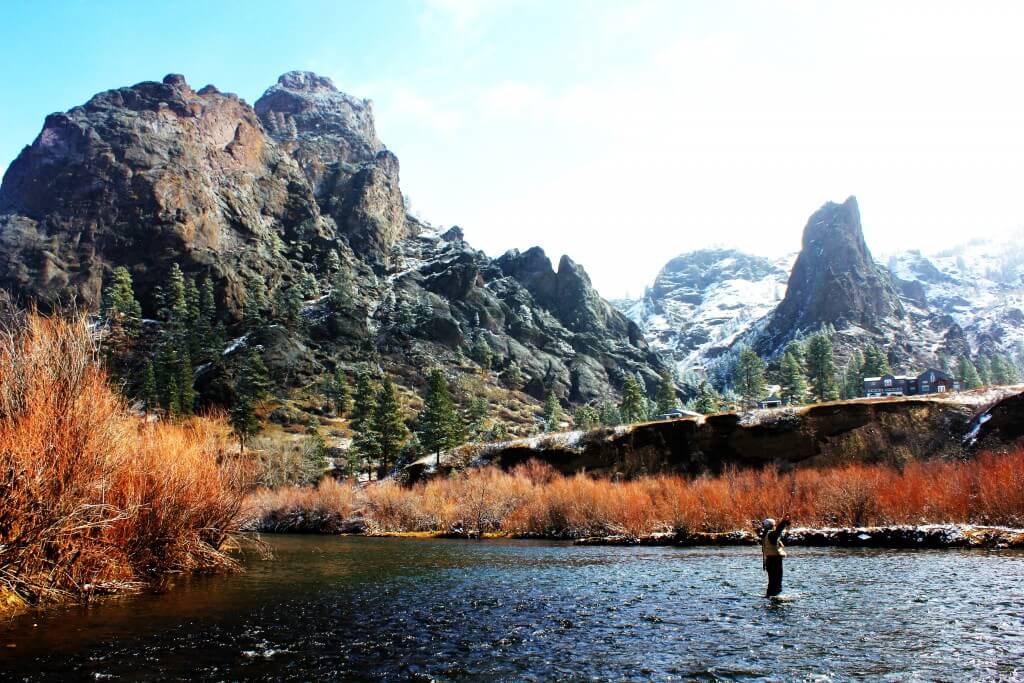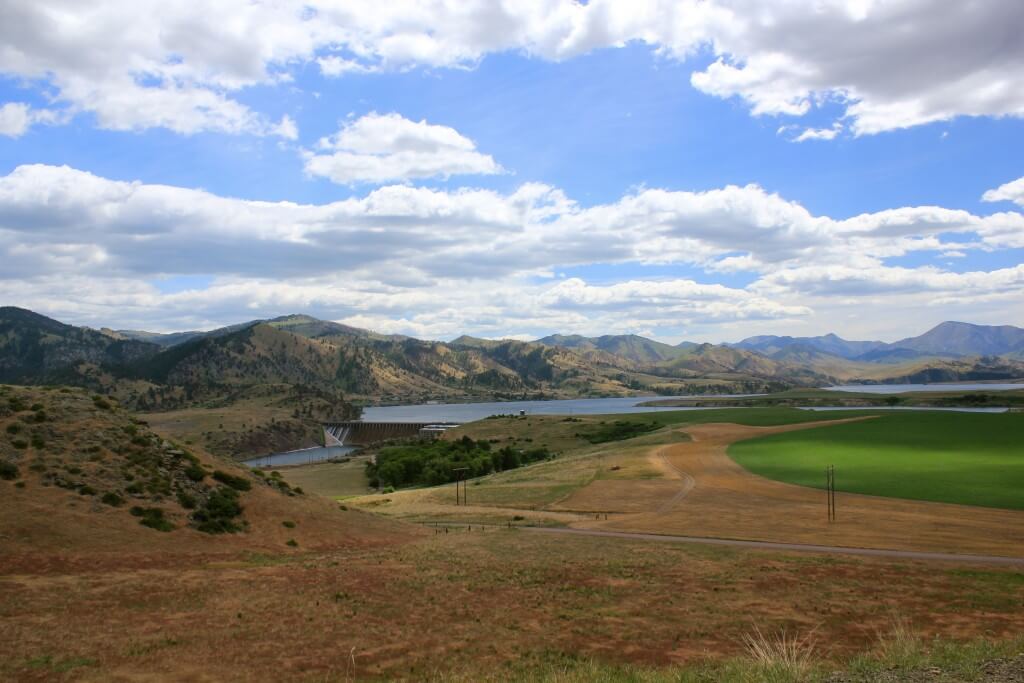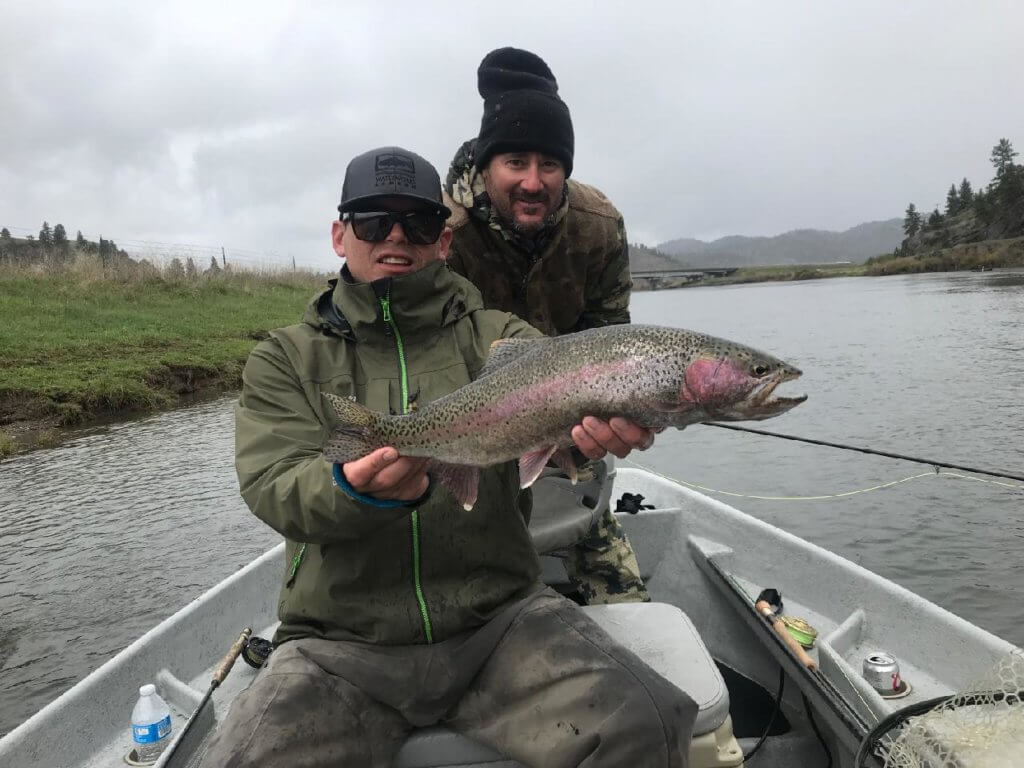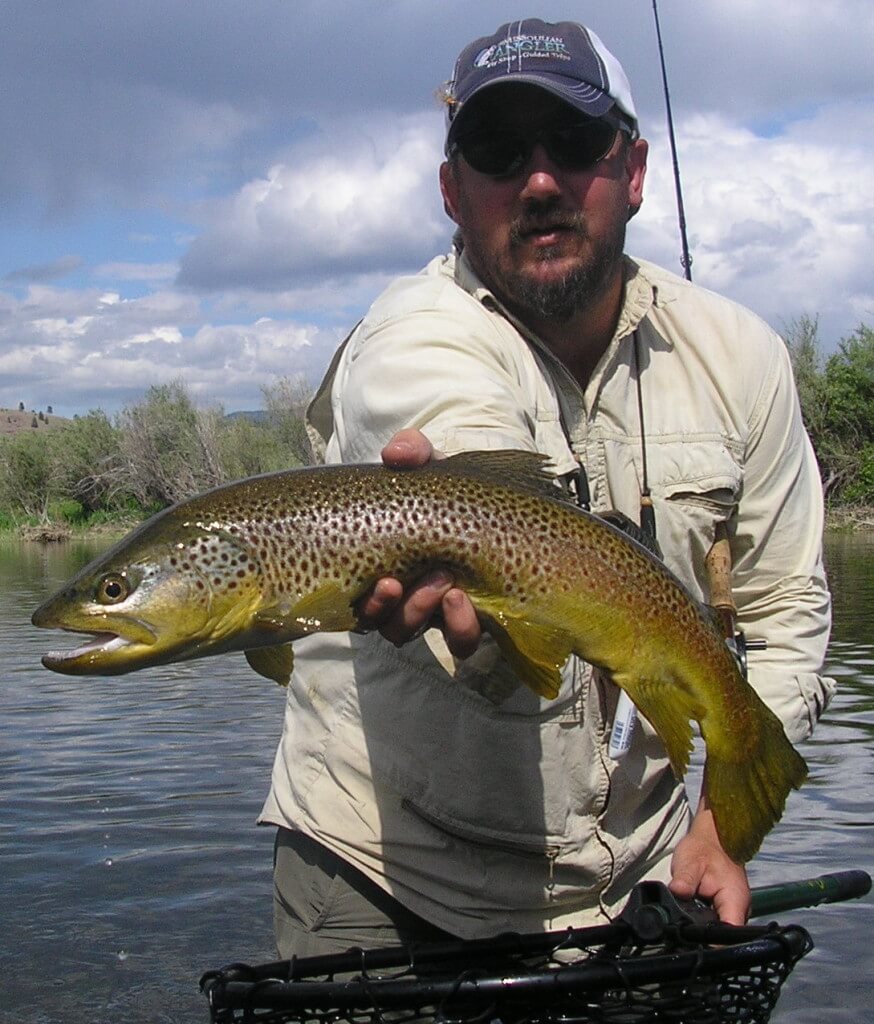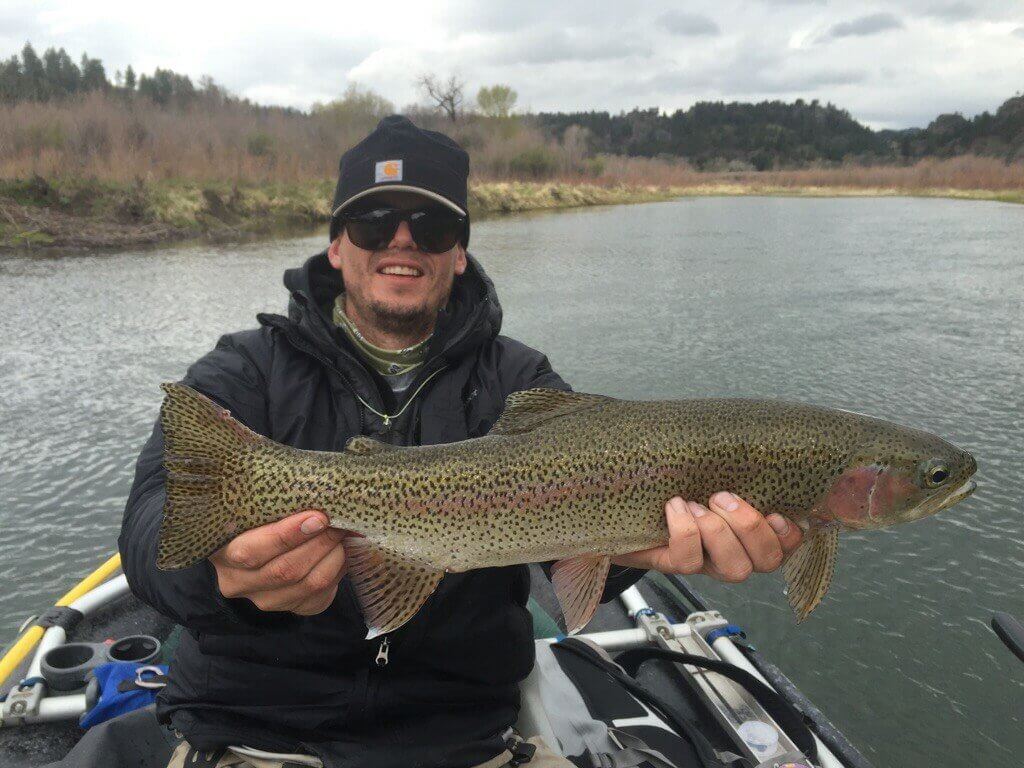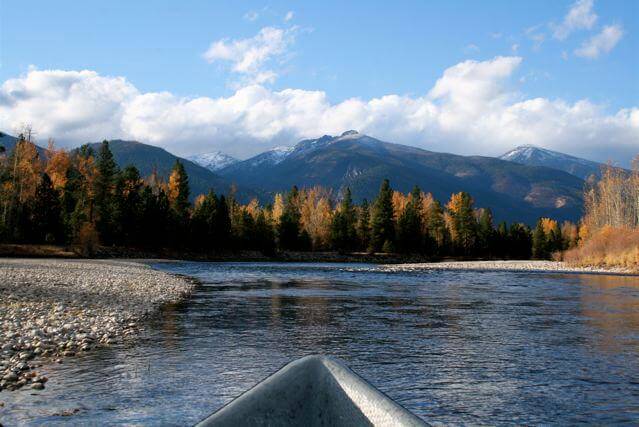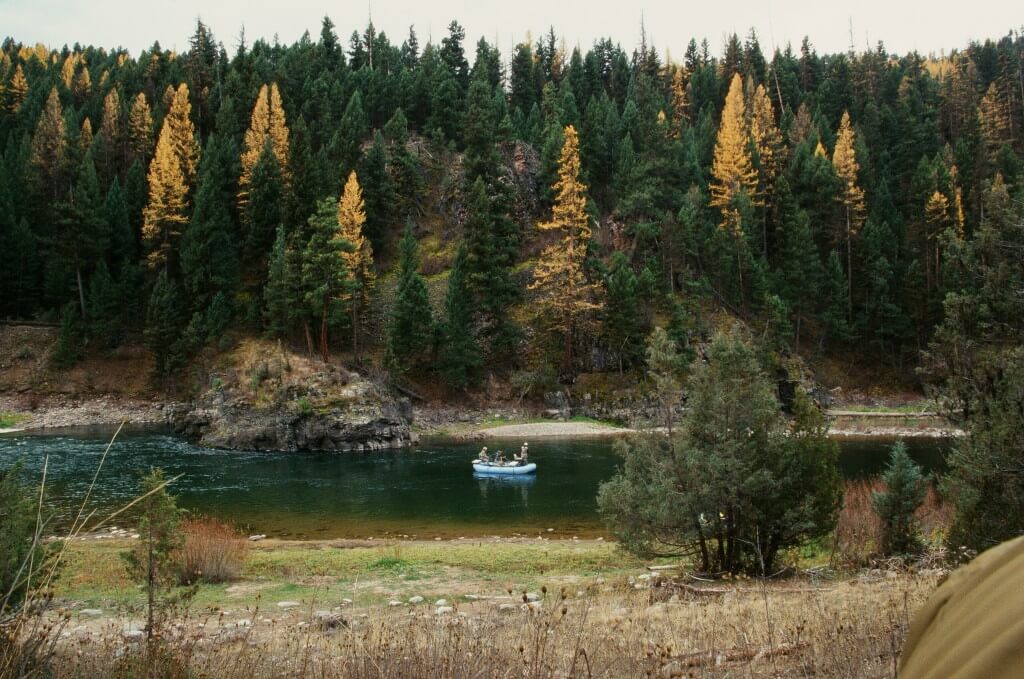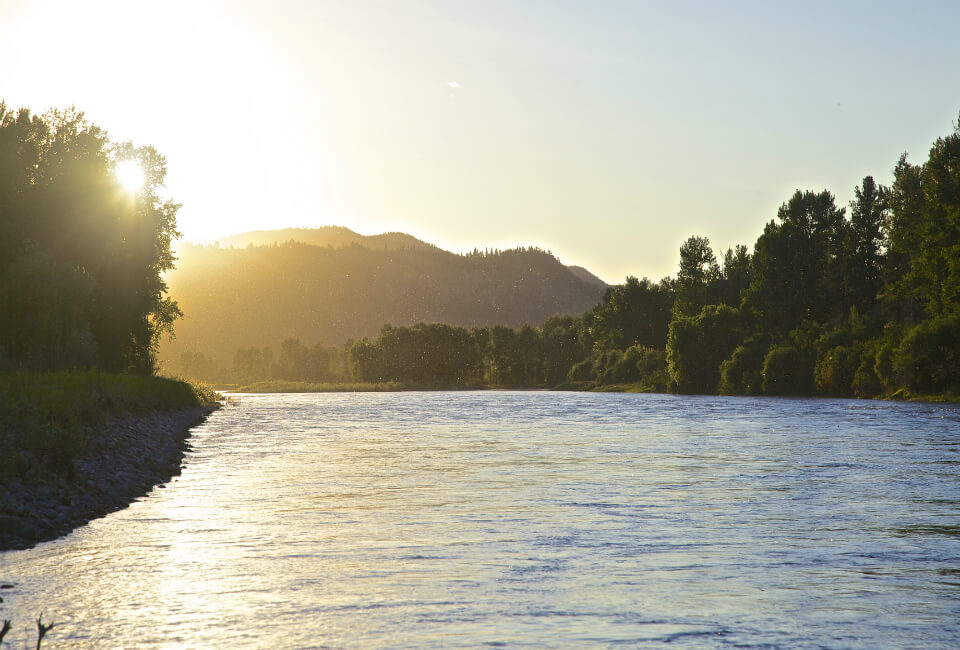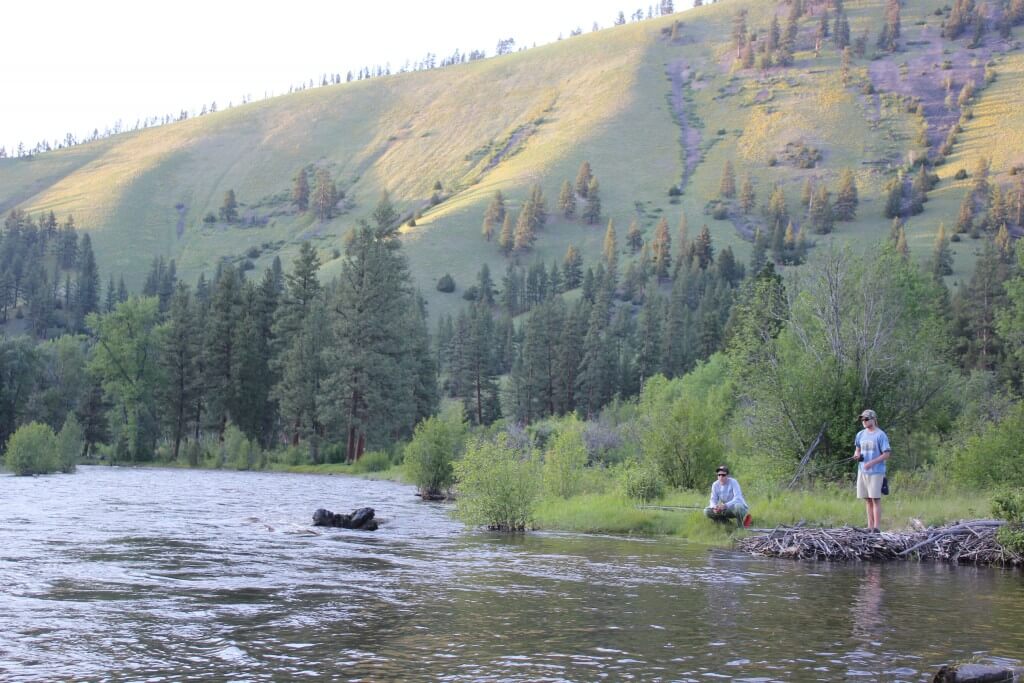Missouri River
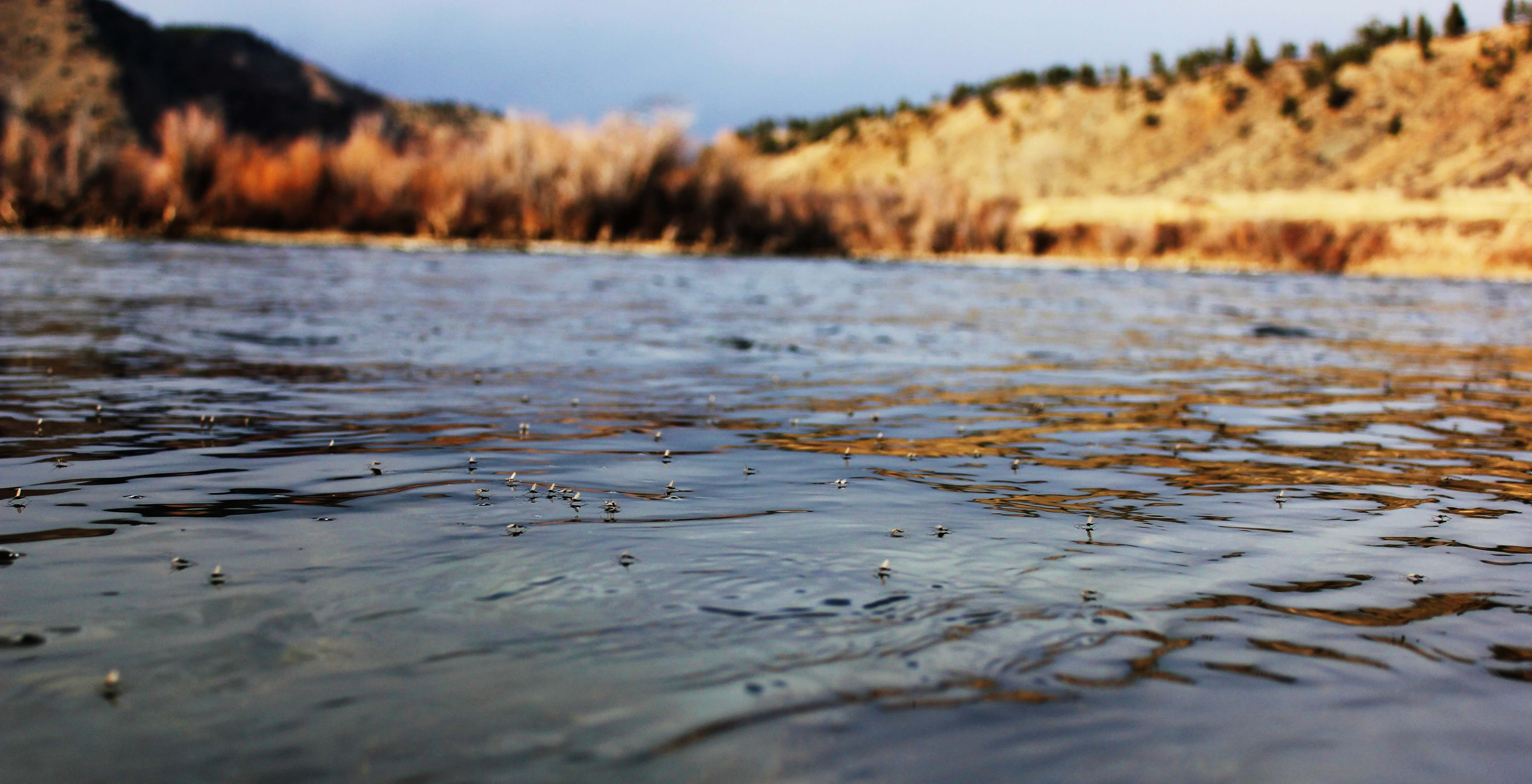
Tailwater Aquarium
First Impressions
Fly fishing the Missouri River in Montana defines the luxury of living in Missoula! This fantastic fishery, this major Montana river that’s a destination for thousands of anglers across the United States, is often used as a fall back river for the Missoula and Bitterroot River Valley! The Missouri River could not be a more different fishery than our Missoula rivers. The Missouri is a tailwater fishery, with flow generated from a bottom release dam. That release method maintains a very steady water temperature, and all dams were built to maintain a relatively stable flow throughout the year. All Missoula rivers are freestone rivers, deriving their water from snow melt and mountain seeps. It’s why the Missoula rivers have such a dramatic run-off and wild temperature fluctuations- our water sources are no-where near as consistent as the Missouri River. Yet even full of giant fish and insane amounts of food, it’s not an everyday thing to head to the Missouri River for a day’s fishing when the bite is on in Missoula!
But let’s not kid ourselves, the Missouri river fly fishing offers opportunities that can’t be found in Missoula. Tailwater fisheries are known far and wide as food and fish factories. The constant temperatures and consistent flow provide the perfect habitat for scuds, sowbugs, mayflies and caddis. These insects thrive in numbers that need to be seen to be believed, and the fish are fat, long and happy. If you’re an angler that’s enthralled by the chance to take multiple fish over 20-22”, the Missouri may just be the place to go and try your hand.
With a tailwind, the Missouri River is about an hour and 45 minutes away, but you should plan on 2 hours. Because the Missouri is a tailwater, the river is relative wide, flat and 4-6 feet deep. If you’re bringing a drift boat to Missoula, the Missouri is the perfect place to float. Most put-ins are paved, and not very steep, compared to so many across Montana. You’re crossing the continental divide, so be ready for a little incline in your journey over to Craig, Montana. The Missouri will fish from the base of Holter dam for about 25 miles east. The further from the dam you get, the sparser the trout population becomes, but the fish are very large.
For much of the season on the Missouri, sub-surface fishing dominates the scene. With so many scuds and sowbugs, the trout will key on these freshwater shrimp. The Scuds and sows are high calorie, easy meals, and because they’re so abundant they become the trout’s go-to. The trout get so focused on these crustaceans that the savvy Missouri River fisherman will carry them from size 14-20, in multiple shades of olive, tan and gray. Some with hot beads and some without. It’s a tricky business to match a subsurface “hatch”, but that’s what you’re often doing while fly fishing the Missouri River. Don’t be afraid to change bugs at a fairly rapid pace, refining size and color until you find the imitation the trout are looking for.
The Missouri River fishes year-round. The bottom release dam keeps much of the river from freezing, so if you’re bold enough to venture out into the cold of the high plains, the fish are there and eating. Dress accordingly, and take all the safety precautions that you would associate with water and cold weather. Because of the nature of a tailwater, the water can be much warmer than the outside temperature, something we’re not too familiar with in Missoula.
Spring
Spring brings out the Blue Winged Olives, starting in late March. When you think of blanket hatches, think of the Missouri River. This is a river where you need all your dry fly guile, because with so many insects emerging at one time, the fish really key in on a very specific stage of emergence. It can be a challenge to find what the fish are taking, while maintaining a good drift in water that has multiple microcurrents due to the aquatic vegetation that so affects the currents. Dry fly fishing on the Missouri River can be very technical, and taking a lot of fish on the dry is not the norm. If you’re tired of looking at an indicator, and the dry fly fishing gets a bit snotty, throw the streamer. Those big Missouri River fish will respond to meat on the fin like every other trout! The streamer fishing can be phenomenal on the Missouri in the early spring time, so don’t neglect that side of your fly arsenal. In fact, more than a few Missoulians head to the ‘Mo with nothing but a 7wt and a box full of junk. We have pictures on our Missoula fly shop wall justifying that angling choice.
It’s late spring when the Missouri river really comes onto the radar of Missoula fly fishing anglers. As the rivers blow out on this side of the divide, the Missouri is still running clear. For those whose Montana Vacation comes during run-off, the Missouri will get you on the water, catching trout. That’s not something Missoula can often brag about in mid-May. That’s not to say the Missouri isn’t affected by run-off as well. The flows do rise, because the lake behind the dam can’t hold all that water. Still cold and clear, but higher and less friendly for wading fly fishing. Additionally, as tributaries to the Missouri river come into the river, they bring their silt and discoloration to the river, which certainly affects the fishing below those confluences.
The Missouri river begins to take a lot pressure at this time of year. It’s not a secret the Missouri is the only river within 200 miles to fish consistently and well in May and early June. Added to the usual angling pressure, now the Missouri is draining the fishing populations from Missoula to Bozeman. We’ll get you on the water and catching fish, no doubt about it, but you may find yourself with a few more anglers than you anticipated. As always, the fish will be large and plentiful and that often makes up for the feeling that you’re not on virgin water!
Summer
As run-off drops around the state, the fly fishing pressure on the Missouri River drops as fast as the freestone river levels in Montana! The PMDs start to appear on the Missouri, and again, it’s a blanket hatch with all that entails. Be there at the correct time, and your buff is above your nose just so you don’t eat any mayflies! The nymph/scud fishing is on fire, the river is dropping and clearing below the tribs while the streamer fishing is as effective as it was in the early spring. As with every river in Montana, the Missouri boasts some extraordinarily good fishing in late June and early July. If you’re going to fly fish the Missouri River, this is the perfect time to do so!
Because as summer progresses, the bountiful, fertile Missouri River has the ability to get a little too fertile. Aquatic vegetation can become a serious factor in fishing the Missouri. As water levels drop, and high temps and sunny skies start to dominate, the vegetation, including algae, begins to grow. The vegetation affects the float of your dry fly, creating microcurrents that challenge the best anglers. Vegetation affects the subsurface fishing as well. It takes a bit more dedication to your Missouri River fly fishing when the vegetation is rampant, as there’s a lot of fly cleaning involved. Which can be so annoying in the morning, because the hopper fishing on the Missouri River can be some of Montana’s best fly fishing!
The best hopper fishing always come with a bit of wind. Hoppers are good enough flyers that in standard conditions, they don’t hit the water all that often. For those who’ve spent any time on the eastern front of the continental divide, you know that wind is not a problem. Well, at least having wind to blow the hoppers into the water isn’t a problem. That’s not to say sometimes the wind seems to be just a little bit than required to knock the hoppers down. Sometimes it feels like the wind has been winding up since Iowa to hit the river! The Missouri River runs through an exceptionally fertile valley, and there are a lot of hoppers there. When the wind blows, the trout gorge on hoppers. It may test your casting in the wind, but when you get it done, you can be well rewarded. The hopper fishing can turn your day around, with big fish slashing at wind-blown terrestrials.
Fall
As soon as the weather starts to cool, and days shorten, the algae recedes and fly fishing becomes so much easier. Streamers come back into play, as do the BWO’s. The nymph/scud fly fishing has become a lot more pleasant, and because you spend more time fishing and less time removing debris, much more productive. Trout are trout- hard-wired to think big food as the nights get longer. Please don’t neglect Fall streamers on the Missouri. The fish are looking for meat- don’t be afraid to supply it! As fall wanes, the river gets back to its winter rhythms, offering exceptional nymphing for big fish.
Final Thoughts
We hope our home-town pride didn’t show through too much! The Missouri River is a world class river with 1000’s of trout per mile. If you want to join the 20/20 club, both variations, that can be accomplished on the Missouri. It’s a food factory for trout, so they’re big, healthy and strong year-round. Once you’ve got it dialed in, you can have numbers on the Missouri that can only be found on Montana’s finest tailwater rivers. It can be a bit tricky to wade, due to its size, which makes it one of the best rivers in Montana to float. It’s got size, numbers and relatively easy accessibility. That can be the perfect mix for any angler!

